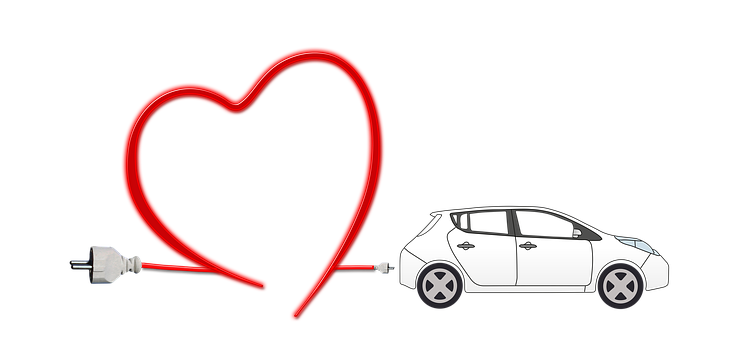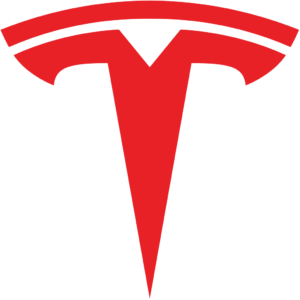Periodically, I like to step back from the daily flood of transportation and energy news to observe some broad trends in this unfolding saga. Let me address a few interesting recent topics in no special order.
For the past three weeks Tesla stock has been on a 269 point decline, and there was little Tesla-oriented news in the press until its 5 for 1 stock split announcement on August 11th. Since that announcement Tesla’s stock price has rebounded some 200 plus points. It is well recognized that Wall Street works on emotional swings, keyed by the latest news flashes and press releases of each day. To many Tesla fans, the recent news of Tesla’s latest over-the-air (OTA) software update was important, as well as knowing that Tesla was furiously working on reconfiguring its Fremont manufacturing plant for more capacity and productivity.
During this period the average person who follows automotive and/or financial news was receiving nothing but a steady stream of press releases from the “we’re gonna” crowd. These are the automotive companies who have no electric vehicle products to offer now. So the way they keep Wall Street’s attention is to constantly issue press releases stating that we are going to have this new product or this new feature or this new battery technology by…2021, 2022, 2023, 2024, 2025, 2030 — blah blah blah. Such PR droppings are littered with unsubstantiated claims, obfuscating and ambiguous terminology, and a great deal of hope and prayer — anything to keep the company’s name in the press and cable TV’s financial news.
Particularly egregious are the extravagant, conflicting, and constantly changing claims from Nikola and its Executive Chairman Trevor Milton. They all describe a thriving company with the glaring exception that in its first public quarterly filing the company valued on June 30, 2020 at a $20.5 Billion market cap had $36,000 in revenue and that from a solar roof installation! In addition, Nikola doesn’t have a single product completely designed, doesn’t have a single manufacturing plant of its own, and has not produced or sold a single product from its nine (and counting) product lines. Bloated with bluster and hydrogen gas, Milton is the Donald Trump of the truck world.
But not far behind are the boasts from Ford, GM, FCA, Nissan, Mercedes, BMW, Audi, VW Group, Toyota, Honda, and Hyundai/Kia – goodness, did I leave anyone out? Comparatively, Renault and the PSA Group (Peugeot, Citroen, Vauxhall, Opel) in France seem to be doing somewhat better. Volvo (Geely) is doing well with its XC40 Recharge and Polestar 2.
So we wait, and wait, and wait for all these new EV wonder products. Few to none of them have stood the test of EPA (US) or WLTP (rest of world) certification. Few to none of them have been driven in a real world environment by average drivers. Few to none of them have been put under the magnifying glass of the auto enthusiasts’ magazines or Consumer Reports.
But recently we have some evidence that it just might be a bit harder than these companies thought to compete with Tesla in the EV marketplace. To wit:
- Audi just had to cut the US price of its e-Tron by $8,800 to be more competitive. As I have pointed out before, US dealers were already having to discount them that much to move just 2872 e-Trons in the first half of 2020. In addition, Audi did manage to up the e-Tron’s EPA-rated range from 204 to a mere 222 miles, a paltry 8.8% gain. How meager the e-Tron’s range remains!
- Around August 11, 2020 Porsche had to officially admit that their beloved Taycan is unable to perform significant OTA updates. This late-breaking news came today via Twitter from Alex Voigt in Germany. To quote Voigt: “It’s useless that they [Porsche] still promise smaller volume OTA if you must drive to a dealer for larger ones and spend time & $.”
- The very day before Porsche’s blunder was revealed, it was VW’s turn again. I have written extensively about VW’s e-Golf and ID.3 software problems, slow corporate decision making, and management infighting and upheavals. This time, again from Alex Voigt via Twitter, VW’s ID.3 with the large 77 kWh battery has “an official weight restriction for the driver [a problem in Germany!] and only 2 seats on the rear bench [a four seater, not a five seater]….The car is otherwise too heavy and not authorized [for road use except under those conditions].”
- And then there is Ford Europe. Sales of their European Kuga/Escape Plug-in Hybrid electric vehicle produced before June 26, 2020 were halted on about August 10th as there was a risk of fires, apparently when charging the vehicle’s battery. Owners of the approximately 26,000 Kuga PHEVs produced before that date were told not to charge their vehicles’ batteries. It’s not clear whether the problem is with the Kuga Hybrid’s design or was manufacturing plant-specific from either or both of Ford’s plants in Saarlouis, Germany or Valencia, Spain.
It is obvious that software-based electric vehicles pose unique challenges for traditional ICE powered vehicle manufacturers. The devil always lurks in the details!
Meanwhile, Tesla soldiers on. The fact that any auto company has not one but three $1 to $2 Billion plants (each) under construction simultaneously is amazing enough. Equally astounding is the rapid progress of all three of its plants under construction. Giga Shanghai Phase two will likely be producing Model Ys by year end. Tesla’s Shanghai Phase one plant continues to churn out Model 3s at an ever-increasing pace. At Giga Berlin, the Germans – – local construction companies and politicians alike — are amazed with Tesla’s progress and the company’s ability to learn, innovate, and adapt along the way. In Austin, Giga Texas is also proceeding at a blinding pace, with many tasks being completed a week or two ahead of schedule already.
It will be very interesting and entertaining to compare the speed of the Tesla’s three plants’ construction with those of Nikola’s new plant in Coolidge, AZ, GM/LGChem’s new battery plant on Lordstown, OH, and Rivian’s new plant in Normal, IL.
Tesla’s Chinese competitors are also making great progress. Xpeng’s new XP-7 is selling well in China. The company already has a few XP-7s in Europe where they are earning very high marks. Xpeng is reportedly filing for a US public offering this week. NIO has seemingly come back from the dead and is enjoying record sales of its ES6 and ES8 SUV models in China and with the ES6 in Europe. As noted in a recent video from Fully Charged, even the Weltmeister EX5-Z (bet you haven’t heard of that one!) seems to be a very competitive mid-range offering in the Chinese market, as is Xpeng’s G3 CUV.
In summary, Tesla and the Chinese are moving fast and consolidating their industry leadership. Many of the other car companies of the world not so much, and some not at all. It’s hell to play catch up when you are loaded with debt and old plants. There will be blood……….
Now, to use an ICE vehicle term, let’s shift gears a bit.
We are starting to see a trickle of attractive and competitive new battery powered EVs arriving for public consumption. These vehicles are on two levels – the smaller European models particularly attractive in European markets where streets and parking spaces are smaller, and trips are typically shorter; and the more luxurious and larger cars that in some cases are intended to compete with Tesla’s Models 3 and Y.
Some of Europe’s top sellers in the former category are Renault’s Zoe, Nissan’s Leaf, VW’s e-Golf, BYD’s Qin Pro, Hyundai’s Kona EV, Kia’s Niro EV, and Peugeot’s e-208.
In the latter category are vehicles such as Volvo’s XC40 Recharge, Xpeng’s XP-7, Volvo’s Polestar 2, and next year Nissan’s new Ariya. The Xpeng XP-7 and Volvo Polestar 2 are quite competitive with Tesla’s Model 3s and Ys. For the most demanding performance buyers, they fall a bit short of Tesla’s models, but no one knows for sure if the average buyer will care. Prospective car buyers are used to having a car – particular its interior – appear the way it has historically, especially during the most recent decade – all fitted out with luxury trim and reasonably conventional controls, and certainly not too revolutionary to look at or to interact with.
In contrast, for many potential buyers Tesla’s interiors come across as quite spartan and cool, if not cold. In particular, the one central screen in Tesla’s Model 3 and Ys very much puts some people off, either because it’s not right in front of the driver, or because they don’t want to operate their entire car through a software-based touchscreen, or both. So the warmer richer more traditional interiors of these new competitors’ offerings might have some appeal for the average driver who, BTW, is not terribly concerned with zero to sixty mph times under three seconds.
On the one hand, as Musk often points out, the electric vehicle market has plenty of room for all and it is his goal to make the world a more sustainable place to live. Therefore all competitors are welcome, especially when Tesla currently can’t come close to meeting customer demand for its products. But on the other hand, I believe these new competitors (and the more – but less than all – that will eventually come) will force Tesla to sharpen its game – at least in the form of offering more options. This is good news.
One of two such improvements Tesla could make (whether standard or offered as an option) is a heads up display (HUD) for the driver where selected driver information could be displayed on the windshield, as in a jet fighter. Even GM has had this feature for years in some of its cars and it is mystifying why Tesla with its SpaceX lineage can’t put this inexpensive option in its cars – particularly given the company’s emphasis on safety. This would be especially valuable in Tesla’s Model 3s and Ys where the driver has to look to the right out of his/her line of driving vision for relevant driver information and to operate the touchscreen.
Second, as I have suggested before, why not a second screen option for the Model 3s and Ys – – one canted slighted toward the driver, and one canted slightly more toward the passenger. There could also be smaller screen options for rear seat passengers. The Chinese Weltmeister’s EX5-Z has a nice feature – you can rotate the center front computer screen 90 degrees to select either landscape or portrait viewing. If Tesla won’t make these options available, it’s likely that aftermarket Tesla suppliers such as EVANNEX will develop and offer them.
Two major improvements that I hope Tesla will implement soon are to install the Model Y’s one piece rear body casting and its Octovalve heat pump system into the Model 3 as a running change, hopefully with another price drop considering the significant cost savings of using the one piece casting in place of more than 100 separate parts that all have to be fastened together. Elon Musk does a great job listening to his customers and I am sure Tesla will do everything possible to stay on top of the electric vehicle and energy markets.
In other matters…..
It certainly was good news to see that VW Group CEO Herbert Diess took a new VW ID.3 with him on his European vacation. Based on early road test comments, especially regarding the unintuitive and clunky software and driver controls on the ID.3, I am not sure I would want to receive Diess’s first communication when he returns to work. In fact, he probably has been texting furiously all vacation! But kudos to him for self-testing VW’s ID.3 in the real world.
BTW: Despite VW’s initial ID.3 problems, I think that once they get a few software bugs ironed out, the ID.3 will be a huge seller in Europe and in many other parts of the world (not to be offered in US). I also expect a refined and debugged VW ID.4 to do well in the US and globally.
Development times:
Recent news releases have revealed that in the case of both Nissan’s Ariya and VW’s ID.3, they have been in development for five years! This kind of new product development time is untenable today and if not remedied, will guarantee their respective companies’ demise.
Image courtesy of Pixabay
Your feedback in the form of comments or suggestions are welcome in the comment window. Thank you for following my blogs on this site and for participating in my blogging community.




